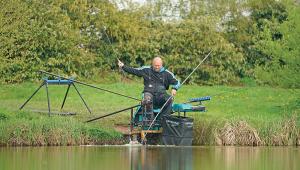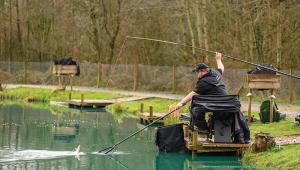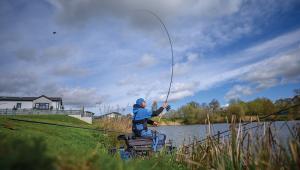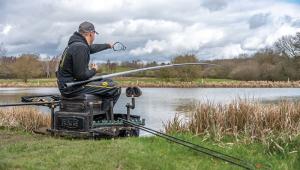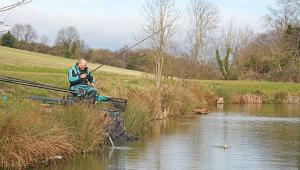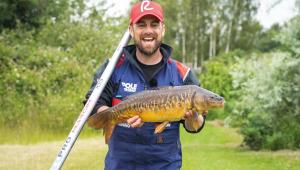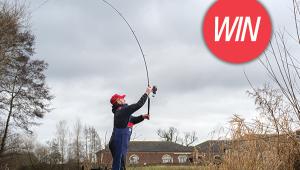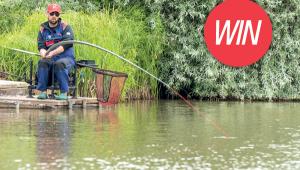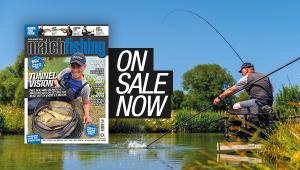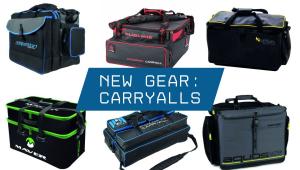Five Things Every Feeder Angler Should Know - Sean Cameron
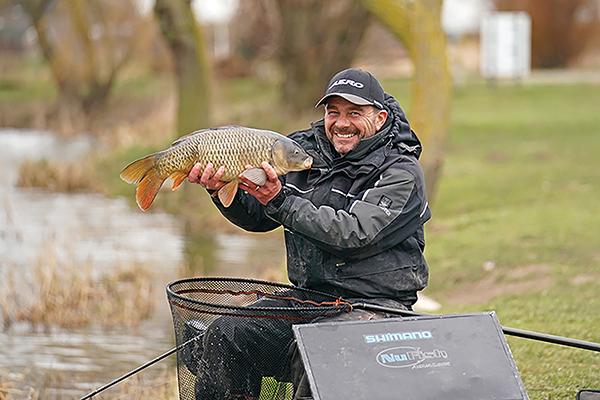
Shimano’s Sean Cameron runs through the top five tips that 40 years of feeder fishing have taught him.
Fishing has got to a point where anyone can buy all the latest gear – £200 rods, reels etc – and be on a level playing field with the bloke next to them. But this is only true tool-wise. After all, tackle doesn’t make the angler, it is what that angler does with that tackle that will make all the difference on the day.
With the standard of kit these days, everyone is starting at 90 per cent, but the great anglers are ‘great’ because of those several one per cents that they personally bring. They no doubt do everything you do on the face of it, but in reality, they do those things that little bit better. So, if this is applicable to 10 things for example, they are operating at a level that is 10 per cent better than you!
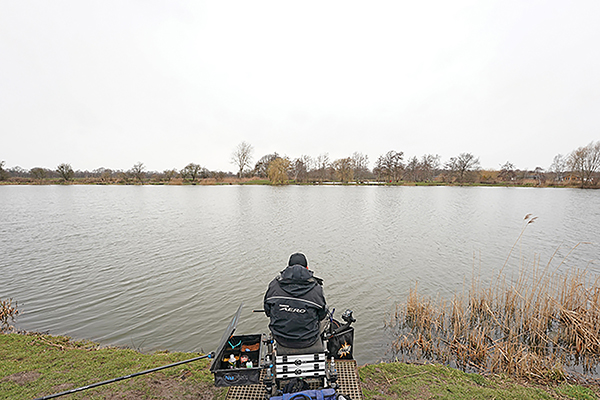
Regarding tactics, feeder fishing was always one of those techniques that seemed to fall into this crack. I’ve seen too many anglers over the years pub chuck their feeder at the start of a match only as a stop gap for when their two or three pole lines have settled. They then wonder why they don’t win. But those anglers who use the feeder as another tool for the day, catch more consistently and so pick up more brown envelopes of cash as a result.
My feeder lines are no different or less important than my pole lines, they are only at a greater distance. I see no point in going fishing and trying to fish in a certain way all day because that’s what ‘you’ want to do. You need to adapt to what and how the fish want it.
There are so many variables in fishing: air pressure, temperature, depth, distance, wind speed and direction, and tow, and this is before we even take into consideration that we are trying to put a hook into the mouth of a wild animal. A creature that will no doubt not act or feed the way we want them to.
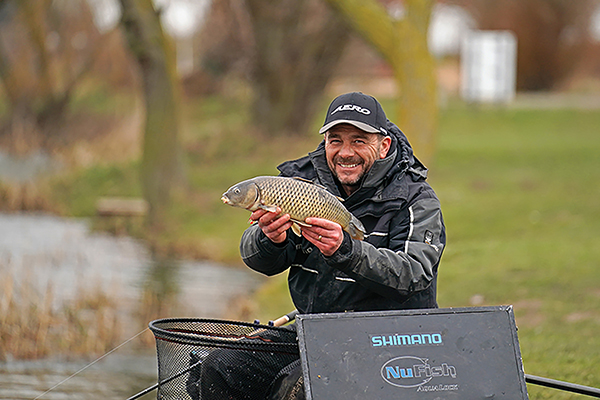
It’s not like darts for example, where the board or the numbers on it don’t move, you throw from the same distance every time with no one stood in front of you and using the dart size, type and weight that you want to use. So eventually there could well be a darts player that only ever throws nine darters as there are fewer individual variables at play.
Fishing isn’t like this, as every day is different and a fish has its own mind too, which you need to work out to catch as many as you can, in the limited time that you have. With this in mind, here are the five things that I think every good feeder angler should know. These tips aren’t exhaustive, but they are the top things that 40 years of fishing have taught me.
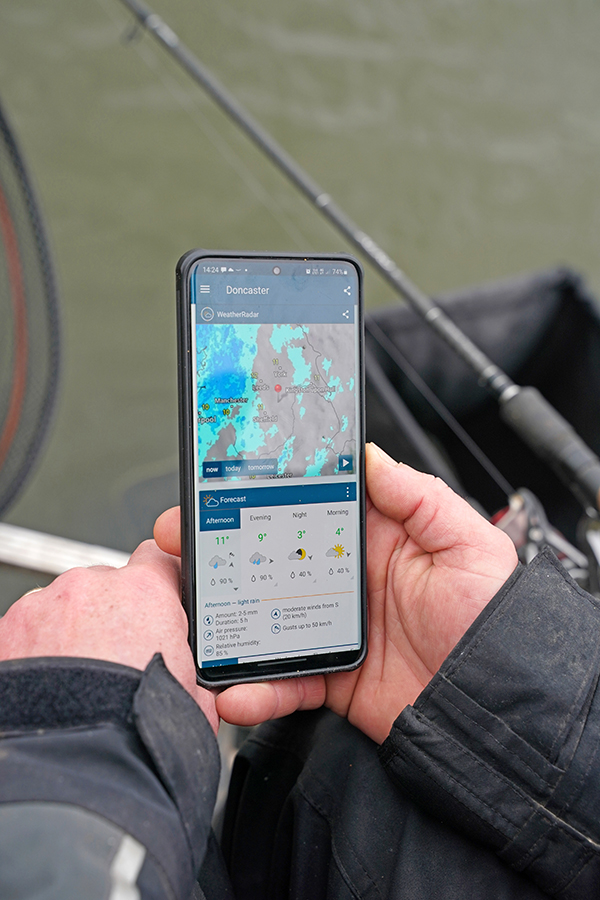
Under Pressure
Watercraft, regarding the day’s conditions, is huge. This has nothing to do with kit or tackle, but it is all about how you approach your swim. I see far too many anglers rushing to their pegs to get set up to fish in the way that they have decided they are going to fish in the car journey to the match. This is wholly wrong.
You have a section of water in front of you and you need to catch as much as you can from there in five hours. You therefore need to stop and think for a while before hastily setting up your kit. What is the wind doing, is it going to get stronger/lighter later on? If the wind is very strong now but easing, it is worth still setting up your pole for later in the match. If it’s going to blow and blow, there’s no point trying to fish 16 metres, even if you want to.
What’s the air pressure doing? If it is through the roof, the fish will want to be sat higher up in the water, so how are you going to force them down? This could be starting off with a cage feeder to create a column of loose feed, for example. For every millibar above 1,000, that equates to one foot of water pushing down on the fish and this is why they come up as it’s more comfortable.
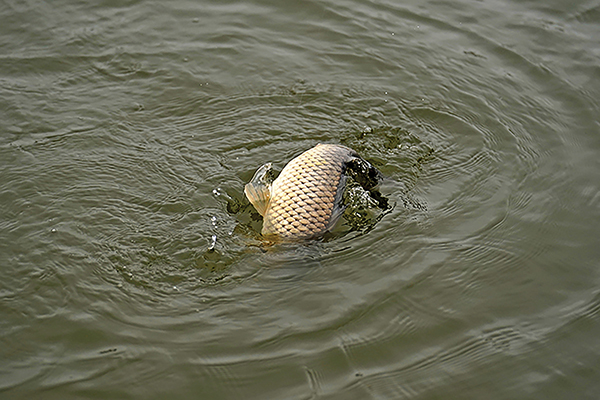
There are also tow and depth to thing about and how the feeder is going to sink and deposit the bait in your swim. All these small things can make a huge difference and the match hasn’t even started yet, but you might be beaten already as you are not fishing efficiently for the prevailing conditions.
Tool Me Up
As with all fishing, your tackle needs to be correctly balanced. You wouldn’t use 0.08mm hook link with black Hydrolastic, so why adopt the same attitude towards feeder fishing?
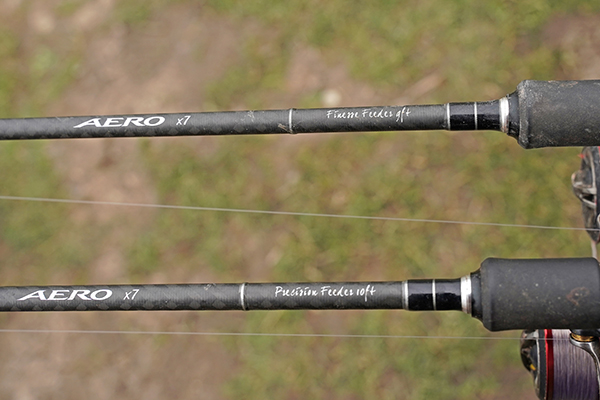
Shimano makes feeder rods from nine to 14 feet for a reason. They are tools to do a job. There is no point trying to cast to the horizon using a 9ft rod – it’ll never happen. Just like a golfer wouldn’t putt using a driver or a sand wedge! You need to look at what kind of fishing you do and the kind of venues you regularly fish and then get rods according to that.
For example, anything up to 25 to 30 yards, such as casting a Method to an island, I’ll use a 9ft rod, whereas from 25 to 40 yards it’ll be a 10ft, 40 to 60 yards an 11ft, and at places like Barston, Boddington or here at Loco at Lindholme, where it’s often 60 yards plus, I’ll use a 12 or 13ft rod depending upon weather conditions. Don’t just buy a feeder rod because you like the look of it. Can it do what you want it to do, on the waters you fish?
Feeder Choice
This is legion and something you could write a book on! There are so many types, styles, sizes and shapes – a feeder is not ‘just a feeder’ anymore. They all do different things, which all have a massive impact on your catch rate.
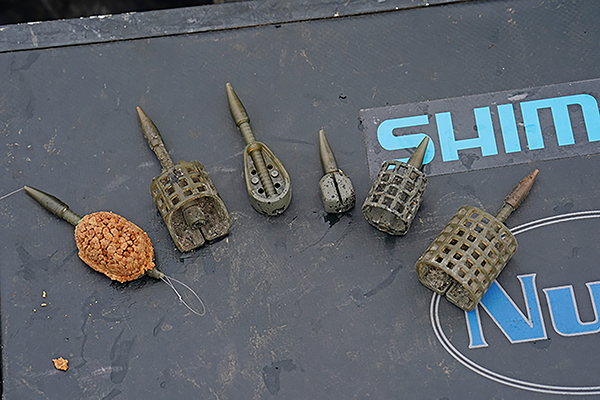
You need to think: “What am I trying to achieve?” If the fish are up in the water, you may start with a cage to feed a column of bait, prior to swapping to a window once the fish have gone down and are feeding on the deck. On commercials, where it’s pellets, it will probably be a Method, but if the lake bed is pebbly, you are better off using a pellet feeder, as the hook bait is buried. It can’t get hidden under any rocks and stones on the lake bed, for example.
Also, try mixing things up. Over time, carp especially learn how to deal with rigs. I’ve seen underwater footage where the carp come to a Method feeder and blow the top layer off, including the hook bait, as it’s always at the top, so they can get a free feed on what’s left in the feeder’s hopper. But, by putting the hook bait lower in the feeder, they can’t get away with it as easily.
Conversely, if you were casting to the shallow margins of an island and getting a bite almost immediately, you want the hook bait as close to the top as possible so it’s the first thing in their mouth.
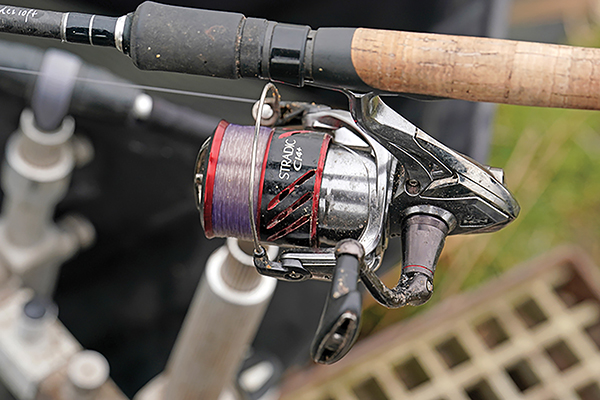
By mixing things up, you can make an enormous difference to the amount of bites and the speed at which they come on any given day. After all, the definition of stupidity is doing the same thing over and over again but expecting a different result. All this comes from trial and error. No company can sell experience, so this side is all up to you. Think about what you are doing and why.
There is also weight to take into consideration. You would never dream of using a 2g float in a 2ft deep swim, so why adopt the same attitude with feeder fishing? Most anglers select a heavier feeder only because they want to cast further.
Yes, this is relevant, but it’s not the be-all and end-all. If you look at open matches and the size of fish you are catching, it is nearly always only one or two fish/hour that separates fourth or fifth place from first. This is not a lot, but these small margins are what makes all the difference.
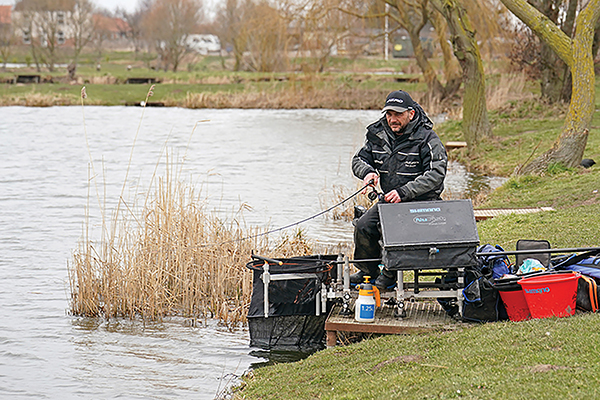
Take Ireland for example. If I’m fishing into 30 feet of water and getting a bite immediately as the feeder hits the deck, there is no point using a 30g feeder, when a 50g feeder will get to the bottom much quicker. I’m not looking to fish through the water, I’m looking for very quick bites, hard on the deck.
In pole terms, it’s the difference between using an olivette or a dozen strung out No10 shot. You need to think about what you are looking to do and how you can most easily achieve that goal.
X Marks The Spot
The more accurate you are the more you’ll catch. From the specimen carp lads, we match boys now have measuring sticks to ensure we know exactly what distance we are clipped up at. Counting reel turns is okay, as long as all your reels are exactly the same. But, with sticks I know that I am 100 per cent accurate at the distance I want to cast to.
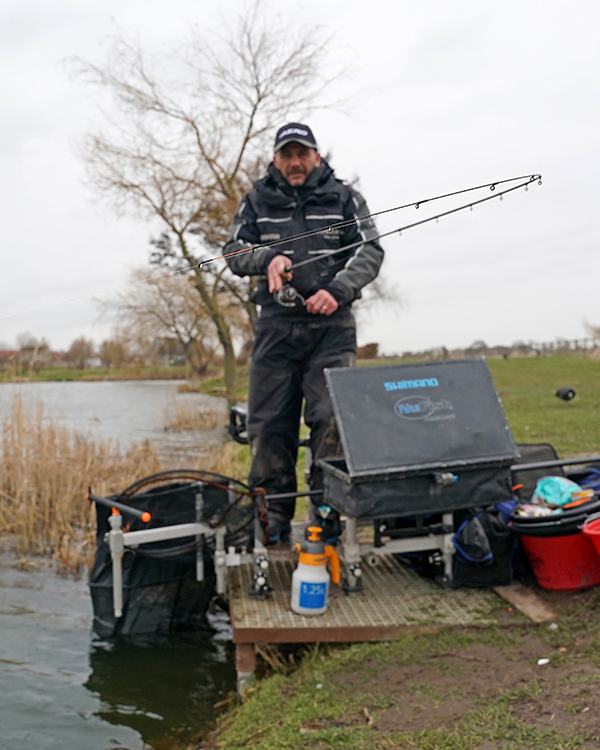
Then, if I do snap or crack off, it takes seconds to set up again, rather than minutes involving casting around with a bomb, which could spook the fish that I have carefully drawn into my swim.
They’re also a great tool in open water, where it is difficult to judge distance. Also, here on Loco, there’s a sunken island at around 45 metres, so if I draw one of the pegs opposite it, I don’t need to spend time casting around looking for it as I can simply measure that distance and make a single cast to check that I’m on it. It sounds obvious, but always have a permanent marker to cast to – one that doesn’t move!
I remember practising distance casting at Southfield Reservoir once, using a boat as my marker, when after an hour, just as the fish were starting to come, it drove off, leaving me to have to start all over again. A juvenile, schoolboy error on my part, you might say.
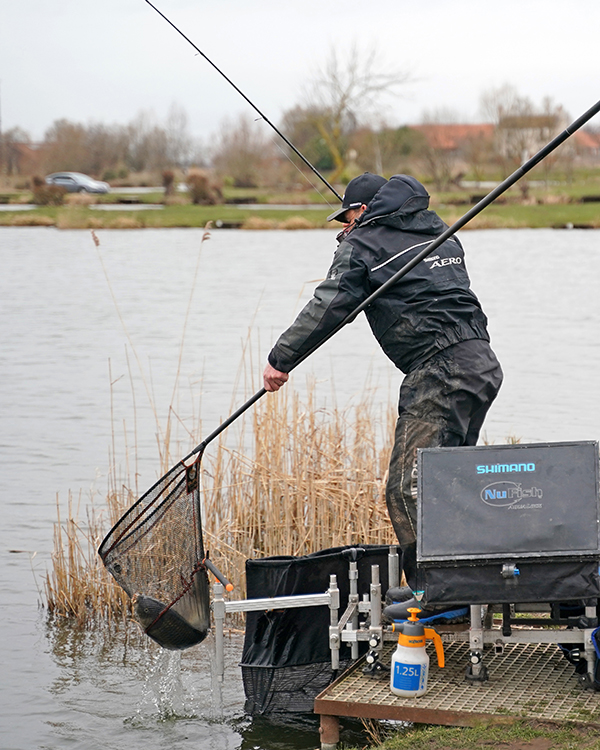
Side wind is another big problem. This is also when a heavier feeder can help as it pulls more of the bow out of the line on the cast, so you can again ensure accuracy.
Don’t go mad. If you have a 30g feeder – as I have on today – go up to the next one, say 45g. There’s no need to jump up to 70g, for example. Plus, if the weather gets too bad, it is better to fish shorter and more accurately than trying to struggle at longer range.
As a rule of thumb, whether it is the feeder or the pole, never try to compete with the elements too much – this is a fool’s errand as the weather will beat you every time. You need to fish the hand you’re dealt not the hand that you’d like to play.
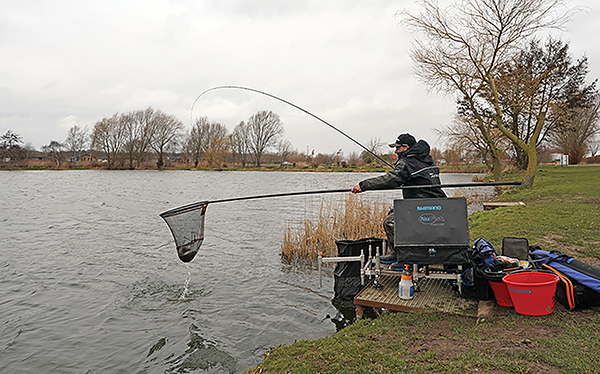
Time Bandit
Having a stopwatch is so important so you can find a rhythm to the bites you’re getting. Today, I’ve been getting all my bites between six and seven minutes, so I know to recast after every eight to eight-and-a-half minutes as after this all I’m doing is wasting time as the fish have no doubt eaten all the freebies and moved off. Also, over the course of a five-hour match this could be a lot of wasted, biteless time I’m using up.
Timings are also useful for pole fishing too. Say, for example, you have fed a line and want to have a look on it in 15 minutes, with a stop watch you can do just that.
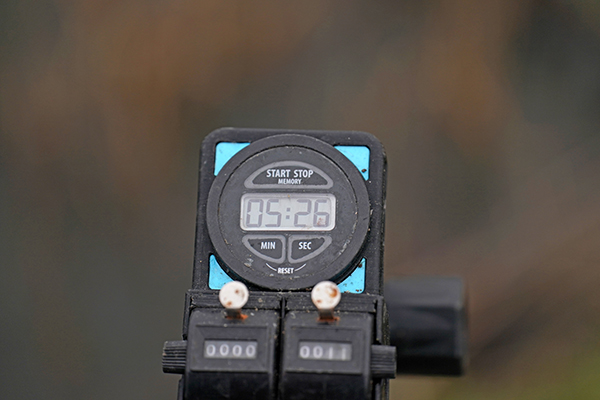
If you try to time it yourself, you will always get it wrong as you are so busy casting, feeding, playing fish and watching what others are doing, that time can very easily run away with you and suddenly that 15-minute time slot is closer to 30 minutes.
Without a stopwatch it is so easy to lose track of time as you have 101 other things on your mind in the heart of a match.
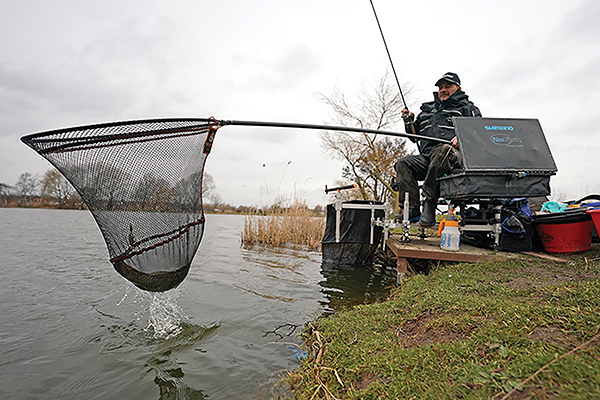
Like I said, these tips are by no way exhaustive, but they are certainly things that have helped me enormously over the years and things that you should certainly think about with regards to your fishing. You are fishing to catch more fish than your competitors, so that you win the match, so by thinking more about what and why you are doing a certain thing, the more that end goal will come into sight. It’s not rocket science, but good old common sense and watercraft.
Just remember, before you do it, take a second to ask why and is it the best thing to do or could you be doing that certain thing better? Food for thought… as they say.
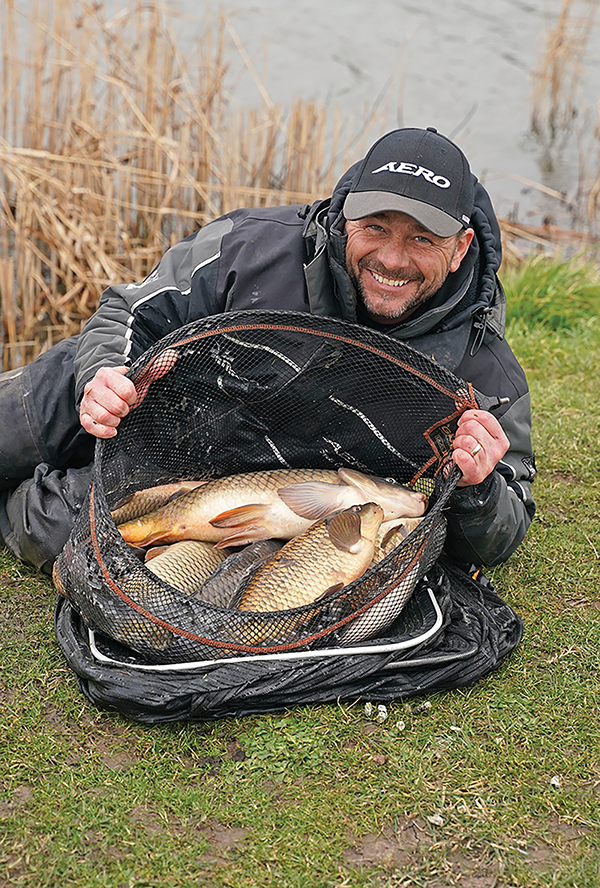
- Log in or register to post comments

